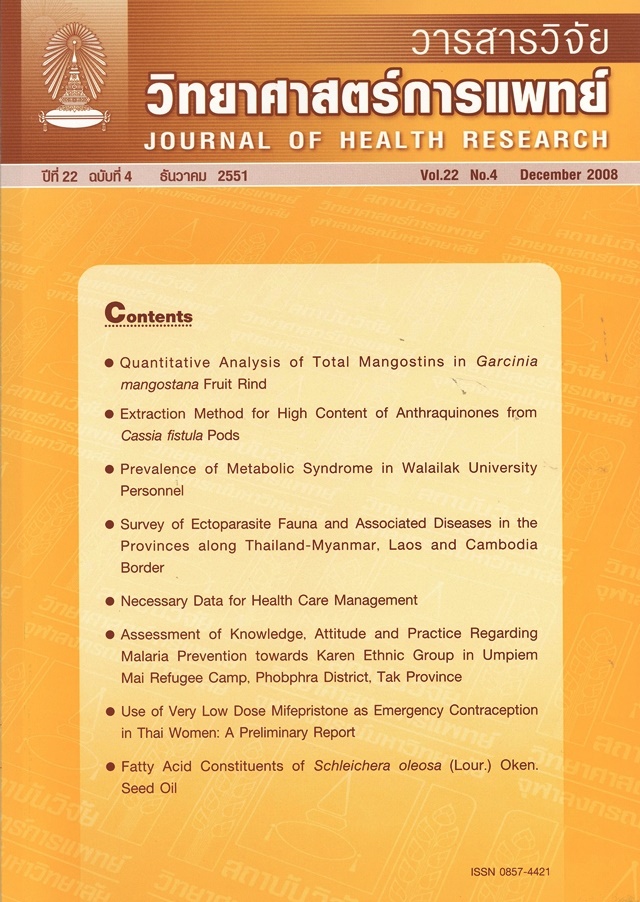Extraction Method for High Content of Anthraquinones from Cassia fistula Pods
Keywords:
Cassia fistula, anthraquinone, extraction method, maceration, decoction, rhein, aloe-emodinAbstract
The ripe pod of Cassia fistula Linn. has long been used in traditional medicines as a laxative drug. The active principles are known to be anthraquinone glycosides of which rhein and aloe-emodin are major components. The pulp from ripe pods of C. fistula was extracted with 70% ethanol by maceration, percolation, and soxhlet extraction, and by decoction with water according to Thai traditional uses. The contents of total anthraquinone glycosides and total anthraquinones in the crude extracts prepared by each of extraction method were determined using a UV-vis spectrophotometer and the contents were calculated as rhein and aloe-emodin. The extract prepared by decoction method contained the highest content of total anthraquinone glycosides which are the active laxative form in the range of 0.2383 ± 0.0011 and 0.2194 ± 0.0077 %w/w calculated as rhein and aloe-emodin, respectively. Maceration exhibited the extract containing the highest content of total anthraquinones at 0.3139±0.0129 % w/w calculated as rhein and 0.2194±0.0088 % w/w calculated as aloe-emodin. Comparing all extraction methods, decoction is simple, convenient, carried low cost in terms of solvent and instrumentation and found to be the appropiate extraction method for the pulp of C. fistula pods for a laxative drug.







